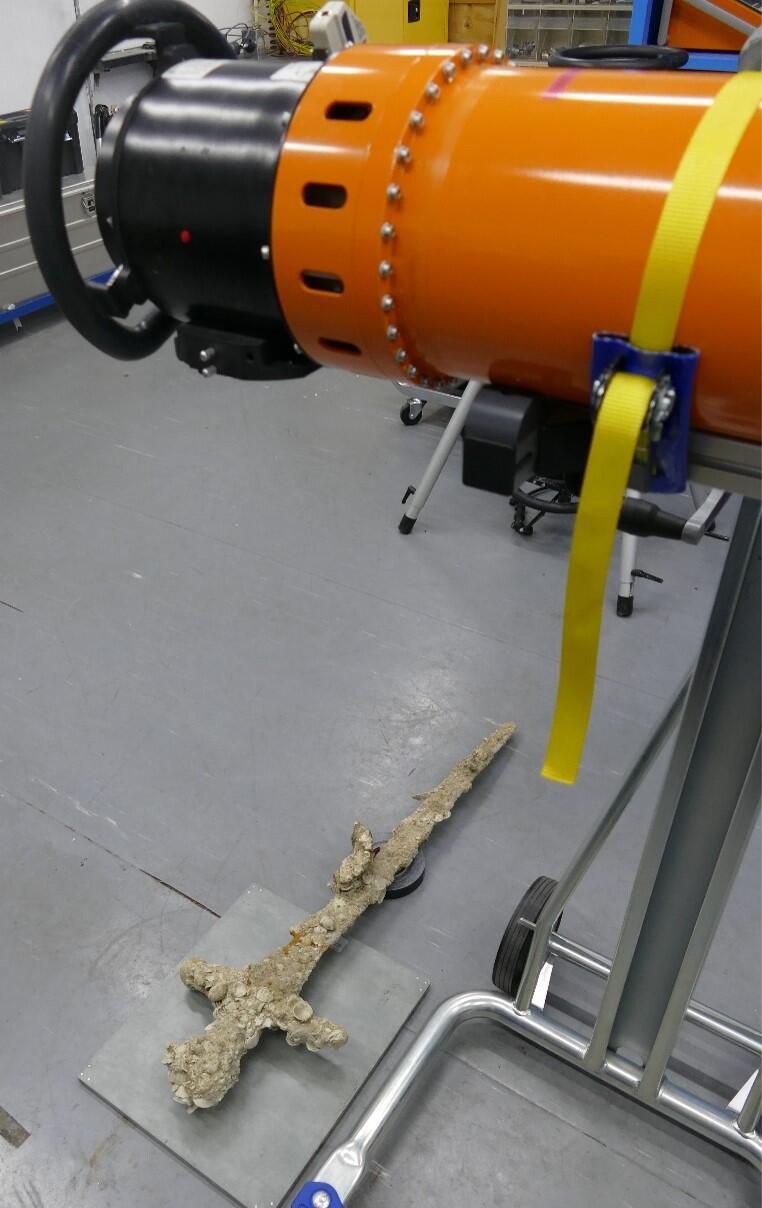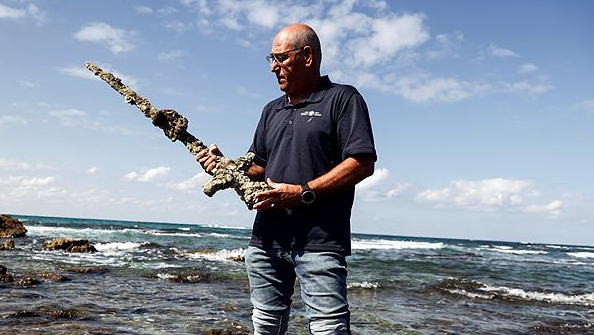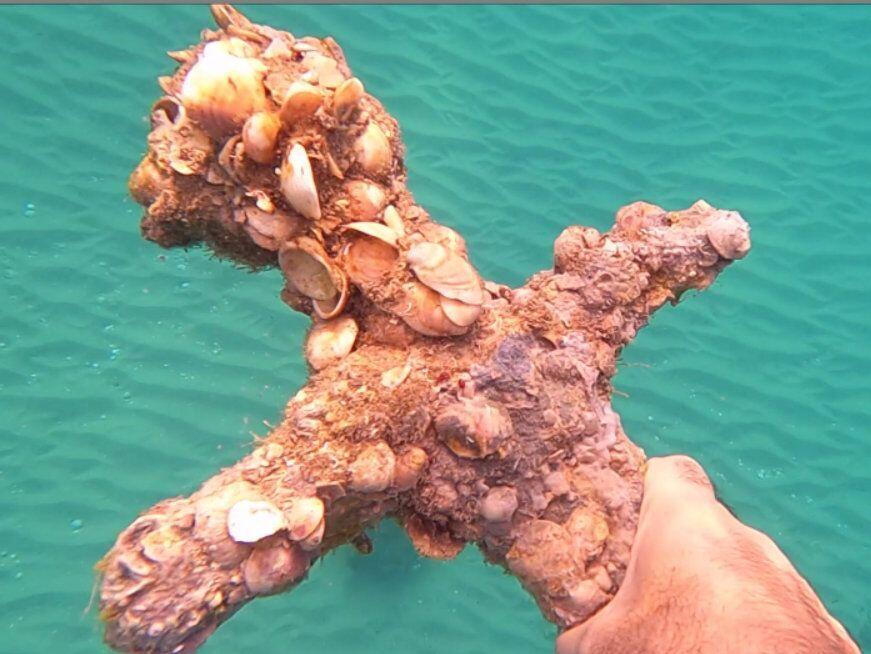A new study published by the Israel Antiquities Authority sheds light on a 900-year-old sword discovered in the sea in 2021 by divers Raffi Bahalul, Shlomi Katzin, and Dr. Ehud Galili.
More stories:
The discovery of the sword attracted enormous interest and was reported in many media outlets worldwide. The sword was covered in a thick marine concretion of sand and shells, making it difficult to separate it from the metal without causing damage.
“It's unfortunate that we can’t see the sword as it was,” the researchers say in the latest issue of the 'Atiqot' Journal. “On the other hand, the concretion is responsible for slowing down the oxidation process, preserving the sword in its entirety. Otherwise, the iron would have rusted and disintegrated in the water.”
The collaboration between the Israel Antiquities Authority researchers, Dr. Yotam Asscher, Dr. Joppe Gosker, and Jacob Sharvit, including Itzak Hershko, and Dan Braitman from the Soreq Nuclear Research Center, allowed the ancient sword to be studied without removing the sand and shell coating.
Cutting-edge X-ray technology made it possible to visually penetrate the layers of marine concretion and take a glimpse at the sword's original shape.
“The sword was used by a Crusader who settled in the area following the First Crusade and established the Kingdom of Jerusalem in 1099," Sharvit said. “Considering the battles that took place here between the Crusaders and the Muslims, known from several historical sources, we could expect to find more swords."
"We mostly find fragments, very few whole swords," he added. "So far, seven swords from this period have been found in Israel, most of them discovered in the sea. Swords weren't usually discarded, but over the years, once they were no longer in use, the metal was recycled for other purposes.”
The study revealed that the sword, with an 88 cm long and 4.6 cm wide blade, was probably used in combat, as the X-ray examination showed that it was bent.
“The sword was part of a knight’s or warrior’s personal equipment. It was the main weapon in hand-to-hand combat in those days,” says Gosker. “Swords required a lot of quality iron and were therefore expensive. In addition, sword fighting required training and practice and, therefore, only nobility and professional soldiers fought using them.”
Researchers estimate that the sword fell into the sea during a battle – perhaps between naval vessels. “Being expensive, swords are usually found within a scabbard. In this case, only the sword itself was found. From this, we can infer that it fell into the sea during a battle, possibly along with its owner," according to the study.
"We didn't find any additional remains in our scans of the area," he added. "But who knows? The warrior may still lie undiscovered in the depths, to be found one day.”
The Crusader Frankish period in Israel began in 1099, with the conquest of Jerusalem from the Fatimid Caliphate, who had ruled the country until that time. In Israel, the Crusader period lasted less than 200 years, and started with a new phenomenon in Christianity – a religious war knowns as a crusade.
These armed pilgrimages were intended to further Christianity's territorial interests. The Christians who participated in the Crusades – knights, princes, nobles and ordinary people – were later called Crusaders. After the conquest of Jerusalem, efforts were turned to conquering coastal cities in the area.
Access to ports was a necessary condition for the survival of the Frankish settlements, which were dependent on supplies from Europe. During this period, a strong connection developed between the Crusader kingdom and Pisa, Venice and other Italian republics, who sent their fleets to the Holy Land to place a naval siege on the Muslim coastal cities.
The sword could have been on one of the ships that laid siege on the coastal cities, or perhaps it belonged to a knight who was on a ship returning home to Europe.
4 View gallery


Sword inspected under a special X-ray machine
(Photo: Joppe Gosker, Israel Antiquities Authority)
“Every new find uncovered in the course of archaeological research or by chance, adds another piece of information to our understanding of a period or a site. Thus, the divers, who reported the find to the Israel Antiquities Authority received a certificate of appreciation," according to Eli Escusido, director of the Israel Antiquities Authority.
"There are many finds buried beneath the waves and sand throughout Israel's coasts, and they're often lost forever, or discovered by chance. It's important that qualified archaeologists record the finds and their contexts," he added.
"In recent years, diving has become a popular sport, and hundreds of eyes now search below the sea. As a result, new discoveries are made, and they must be reported to the Israel Antiquities Authority, and recorded and kept in the State Treasuries, to enrich our archaeological heritage,”Escusido said.





